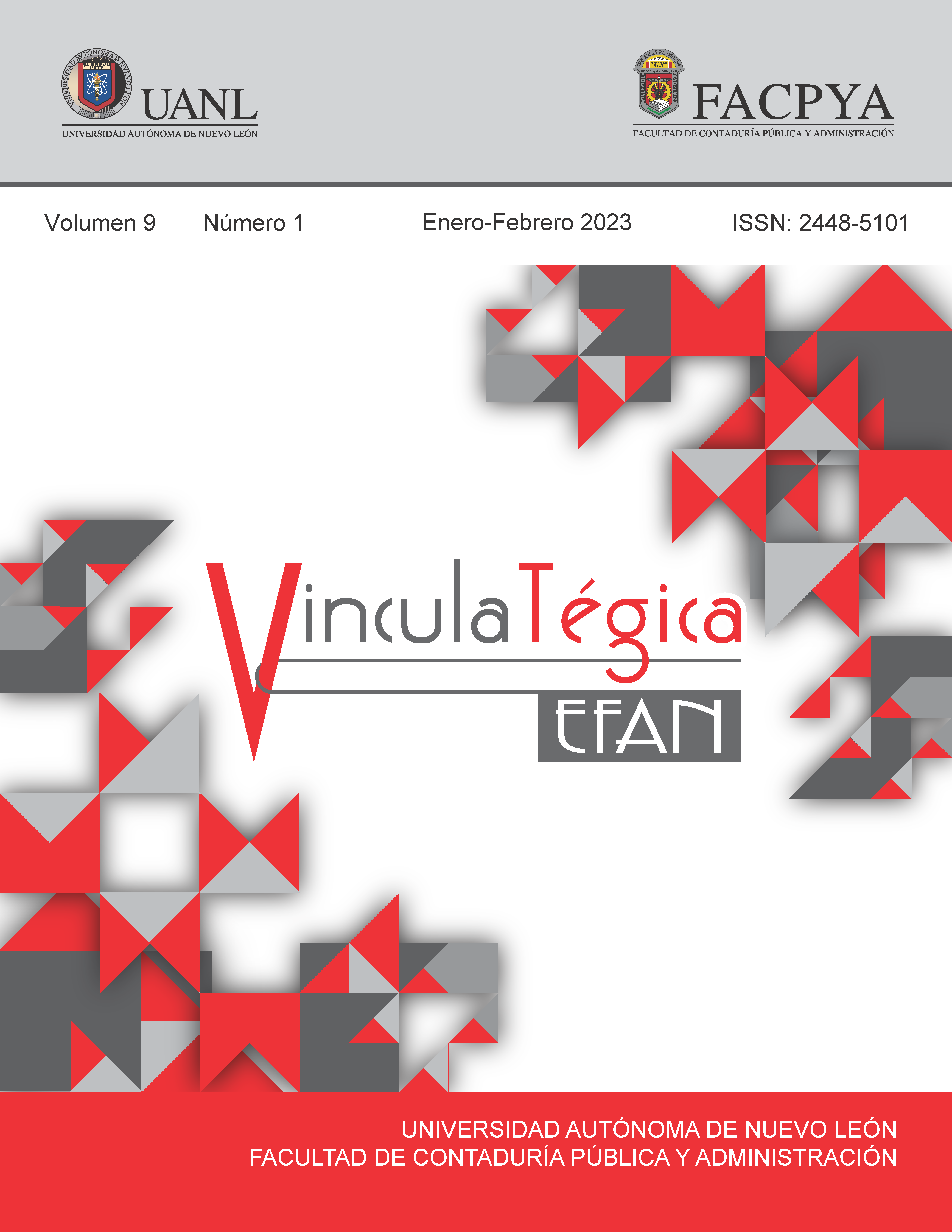Estrategias de imitación en productos de limpieza
DOI:
https://doi.org/10.29105/vtga9.1-324Keywords:
Imitación, Marca, ProductoAbstract
El presente estudio es una investigación exploratoria y descriptiva; para conocer productos de limpieza que se comercializan en México con características similares, se busca conocer cuáles son los elementos que más son emulados, así como los que no son copiados en su presentación. Se presenta un marco teórico sobre la mezcla de marketing, en donde el enfoque principal de este estudio es el producto, se habla sobre la imitación, sobre las marcas; registradas y falsas y en los resultados se presenta una comparación de 4 pares de productos de limpieza que tienen una imagen muy similar, se comparan por par y se establecen cuáles son los elementos más distintivos en la estrategia de imitación, lo que puede dar lugar a que un cliente no sepa exactamente cuál es el producto que está comprando. Los resultados arrojan que son los colores, el envase y la etiqueta, en ese orden, lo más imitado en la muestra seleccionada.
Downloads
References
Antonella, S. F. (2017). The Effects of Marketing Mix (4P) on Companies’ Profitability: A Case Study of Automotive Industry in France. Journal of Research in Marketing Volume 8 No.1 October 2017, 636-640.
Arana Courrejolles, C. (2017). La protección jurídica de los signos distintivos : marcas, nombres y lemas comerciales. Lima: Collecion "Lo Esencial del Derecho" No. 24.
Arboleda, A. M. (2014). Beneficios y perjuicios de la estrategia de imitación. Estudios Gerenciales, 1-8. DOI: https://doi.org/10.1016/j.estger.2014.01.016
Behar Rivero , D. S. (2008). Metodología de la Investigación. s.i. : Ediciones Shalom.
Ertekin, L., Sorescu, A., & Houston, M. (2018). Hands Off My Brand! The Financial Consequences of Protecting Brands Through Trademark Infringement Lawsuits. American Marketing Association Journal of Marketing, 45-65. DOI: https://doi.org/10.1509/jm.17.0328
Fernández Marcial, V. (2015). Marketing mix de servicios de información: valor e importancia de la P de producto. bibliotecas anales de investigación, 64-78.
Hernández Sampieri, R., Fernández Collado, C., & Baptista Lucio, P. (1991). METODOLOGÍA DE LA INVESTIGACIÓN. Naucalpan de Juárez: McGRAW - HILL INTERAMERICANA DE MÉXICO, S.A. de C.V.
Instituto Mexicano de la Propiedad Industrial. (01 de Julio de 2020). LEY DE LA PROPIEDAD INDUSTRIAL. LEY DE LA PROPIEDAD INDUSTRIAL. Ciudad de México, Ciudad de México, México.
Išoraitė, M. (2016). MARKETING MIX THEORETICAL ASPECTS . Journal of Research -GRANTHAALAYAH Vol.4 (Iss.6), 25-37. DOI: https://doi.org/10.29121/granthaalayah.v4.i6.2016.2633
Kamukama, N., & Sulait, T. (2017). Intellectual capital and competitive advantage in Uganda’s microfinance industry. African Journal of Economic and Management Studies, 498-514. DOI: https://doi.org/10.1108/AJEMS-02-2017-0021
Khandeparkar, K., & Motiani, M. (2018). Fake-love: brand love for counterfeits. Marketing Intelligence & Planning, 0263-4503. DOI: https://doi.org/10.1108/MIP-11-2017-0278
Lahtinen, V., Dietrich, T., & Rundle-Thiele, S. (2020). Long live the marketing mix. Testing the effectiveness of the commercial marketing mix in a social marketing context. Journal of Social Marketing, 357-375. DOI: https://doi.org/10.1108/JSOCM-10-2018-0122
Le Roux, A., Bobrie, F., & Thébault, M. (s.f. de January de 2015). A typology of brand counterfeiting and imitation based on a semiotic approach. POITIERS , Nouvelle-Aquitaine, France. DOI: https://doi.org/10.1016/j.jbusres.2015.08.007
Marcet, A., & Perea, M. (2017). ¿Comprarías ropa de DOLCE & BANANA? Similitud visual y percepción de marcas. Ciencia Cognitiva 11:3, 67-70.
Muhammad Amirul Aiman Islaini, & Syafiqah Md Nayan, M. (2020). The Role of Price in the Marketing Mix. The Role of Price in the Marketing Mix. Journal of Undergraduate Social Science and Technology, 2(2)., 1-3.
Nguyen, H., & Gunasti. (2018). Original brands in competition against high quality copycats. European Journal of Marketing, 0309-0566. DOI: https://doi.org/10.1108/EJM-08-2017-0536
Noblecilla Grunauer, M. S., & Granados Maguiño, M. A. (2018). El Marketing y su aplicación en diferentes áreas del conocimiento. Machala - Ecuador: Ediciones UTMACH.
Pogorelova, E. V., Yakhneeva, I. V., Agafonova, A. N., & Prokubovskaya, A. O. (2016). Marketing Mix for E-commerce. INTERNATIONAL JOURNAL OF ENVIRONMENTAL & SCIENCE EDUCATIONVOL. 11, NO. 14, 6744-6759.
Rojas Sanchez, J. M. (2017). El mercado gris. . Fundación Universitaria Católica Lumen Gentium, s.n.
Tamayo y Tamayo, M. (2003). El proceso de la investigación científica. MEXIGO, O.F.: EDITORIAL LlMUSA. S.A. DE C.v. GRUPO NORIEGA EDITORES.
Thabit, T. H., & Raewf, M. B. (2018). The Evaluation of Marketing Mix Elements: A Case Study. International Journal of Social Sciences & Educational Studies Vol.4, No.4, 100-109. DOI: https://doi.org/10.23918/ijsses.v4i4p100
Vera Martínez, J. (2010). Diferencias en el perfil de involucramiento entre productos de conveniencia y productos de comparación. Contaduría y administración no.231, 127-149. DOI: https://doi.org/10.22201/fca.24488410e.2010.252
Wills, G., Kennedy, S. H., Cheese, J., & Rushton, A. (1990). Maximising Marketing Effectiveness. Maximising Marketing Effectiveness, 28, 6-185. DOI: https://doi.org/10.1108/EUM0000000000054
Wongleedee, K. (2015). Marketing Mix and Purchasing Behavior for Community Products at Traditional Markets. Procedia - Social and Behavioral Sciences 197, 2080 – 2085. DOI: https://doi.org/10.1016/j.sbspro.2015.07.323
Yang, S.-P., Chang, S.-C., Liang, T.-C., Situmorang, R. O., & Hussain, M. (2021). Consumer Confusion and Green Consumption Intentions from the Perspective of Food-Related Lifestyles on Organic Infant Milk Formulas. Sustainability 2021 13,1606, 1-16. DOI: https://doi.org/10.3390/su13041606
Downloads
Published
How to Cite
Issue
Section
License
Copyright (c) 2023 Gilberto Rebolledo Iglesias, Elda Aurora Aranda Contreras, Alba Luna Gómez

This work is licensed under a Creative Commons Attribution 4.0 International License.
a). Authors keep copyright and give the journal the right of the first publication of the work under a Creative Commons attribution license. This license allows others to share the work as long as original authorship and initial publication in this journal is acknowledged.
b). Authors may make other independent and additional contractual agreements for the non-exclusive distribution of the version of the article published in this journal (e.g., include it in an institutional repository or publish it in a book) as long as they clearly indicate that the work was published for the first time in this journal.







